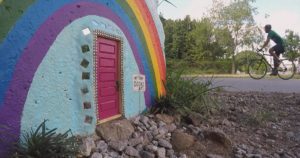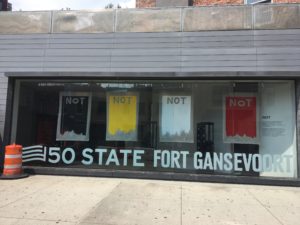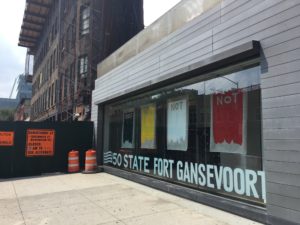What do “doors” do? On one hand, a door might, especially if it’s locked, keep people outside an “insider’s” domain. On the other hand, a door invites people to enter. One knock on a closed door, and two reactions are possible: An inviting voice from the other side might say, “Come in; it’s open.” Or, after being knocked upon, and within moments of waiting, the door may open and a person on the other side potentially could ask: “Can I help you?”
Meet the public art project, #TinydoorsATL.
In 2014, Karen Anderson and Sarah Meng started to introduce these “entrances” in public spaces. Notably, the doors provide access to an imaginary world. Moreover, and provided an onlooker doesn’t miss a potential voyage into the unknown – indeed, it is easy not to notice the doorways given their locations, and sometimes hidden positions – the people of Atlanta can dream-through a portal beyond the here and now.
As stated on the project’s website:
Tiny Doors ATL is an Atlanta-based art project bringing big wonder to tiny spaces. Our constantly evolving installation pieces are an interactive part of their community. With the installation of a door, what was once a wall or the column of a bridge becomes an entrance to collective creativity and an invitation to whimsy. Tiny Doors ATL is dedicated to free and accessible art.
The doors, themselves, are about 7-inches tall, and are located in places in and around Atlanta, Georgia.
According to the principal artist and director, Karen Anderson:
Much of what I’d hoped to see from this project is happening organically. For instance, I’d hoped that our doors would be tiny gathering places, landmarks for people to leave free art for #FAFATL, take creative photos, and get to know other areas of town by encouraging exploration to new neighborhoods. My big goals for the project include tying together communities, and eventually creating a full-time position with Tiny Doors ATL so that I can do the outreach to schools and camps that we’re being asked to provide. I’m also doing some consulting with other cities on their tiny public art movements.
A door can provide us with a sense of possibility. Such optimism and hope is a gift not to be taken lightly.



